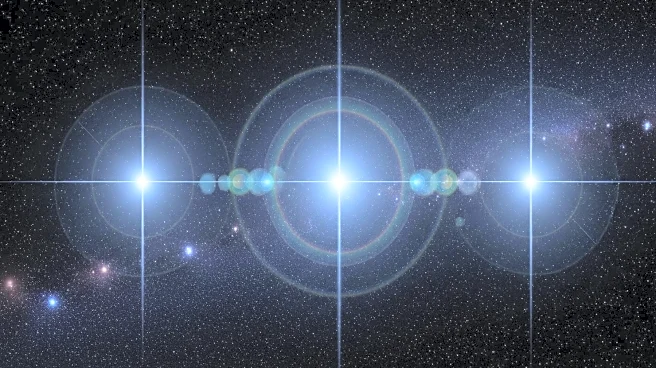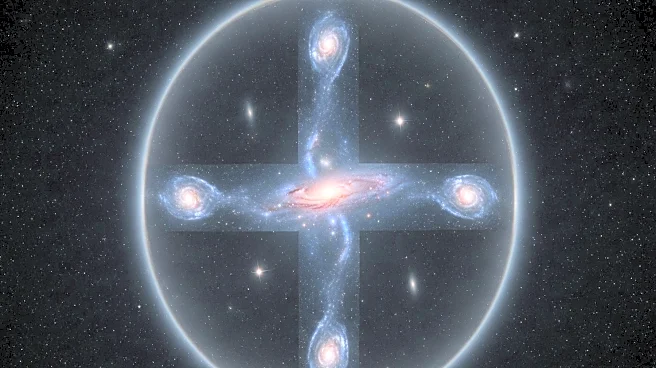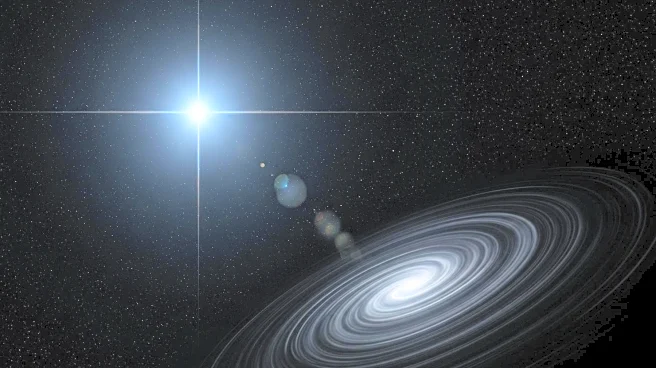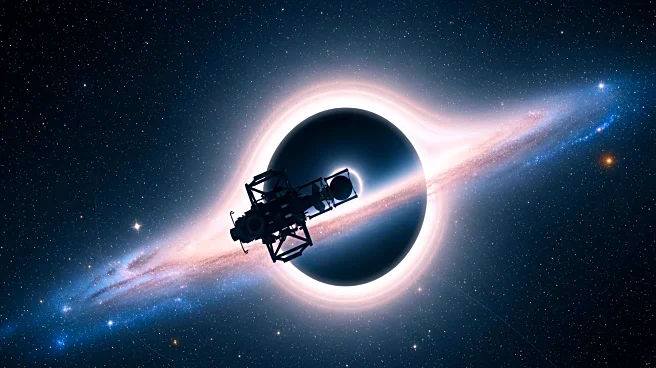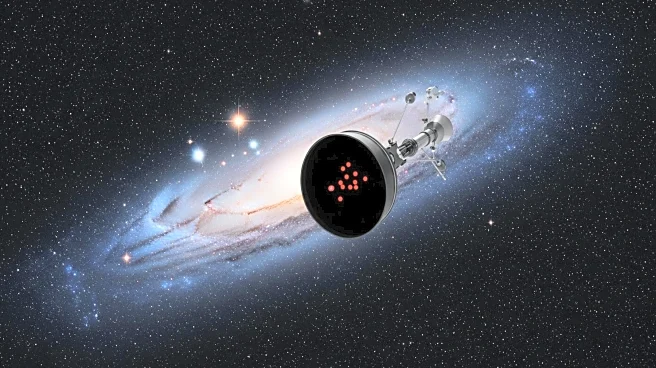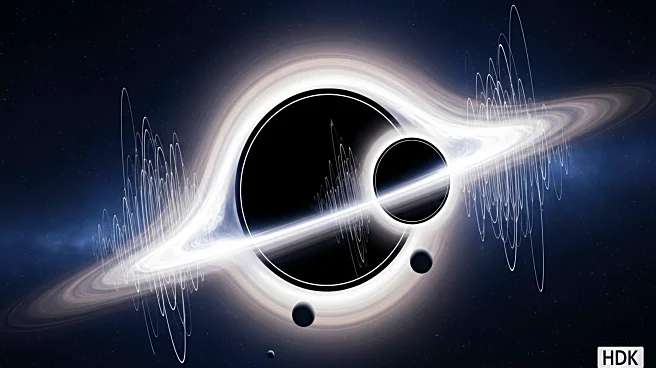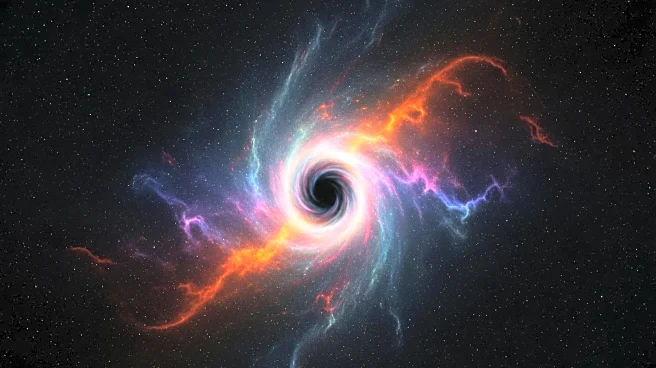What's Happening?
An international team of researchers has utilized advanced computer simulations to explore how faint radio signals from the early Universe could provide insights into dark matter. The study, published in Nature Astronomy, suggests that these signals, expected to be observed from the far side of the Moon, could reveal the properties of dark matter, which constitutes about 80% of the Universe's matter. The research, led by Hyunbae Park from the University of Tsukuba, focuses on small gas clouds from the cosmic Dark Ages, the first 100 million years after the Big Bang. These clouds, interacting with dark matter, could help distinguish between warm and cold dark matter scenarios, which have implications for the formation of cosmic structures.
Why It's Important?
Understanding dark matter is crucial for comprehending the Universe's structure and evolution. The study's findings could significantly impact astrophysics by providing a method to determine the mass of dark matter particles, a key factor in developing theoretical models. The potential to observe these signals from the Moon offers a unique opportunity to overcome terrestrial interference, making it a promising avenue for future research. This could lead to breakthroughs in our understanding of the Universe's fundamental components and the role of dark matter in cosmic evolution.
What's Next?
The research provides theoretical guidance for upcoming lunar missions, which aim to detect these early Universe signals. Nations like Japan are actively pursuing projects such as the Tsukuyomi project, which plans to deploy radio antennas on the Moon. These efforts are part of a broader international push to explore the Moon's potential for scientific discovery, combining technological advancement with scientific ambition. Successful detection of these signals could confirm the study's predictions and advance our understanding of dark matter.

